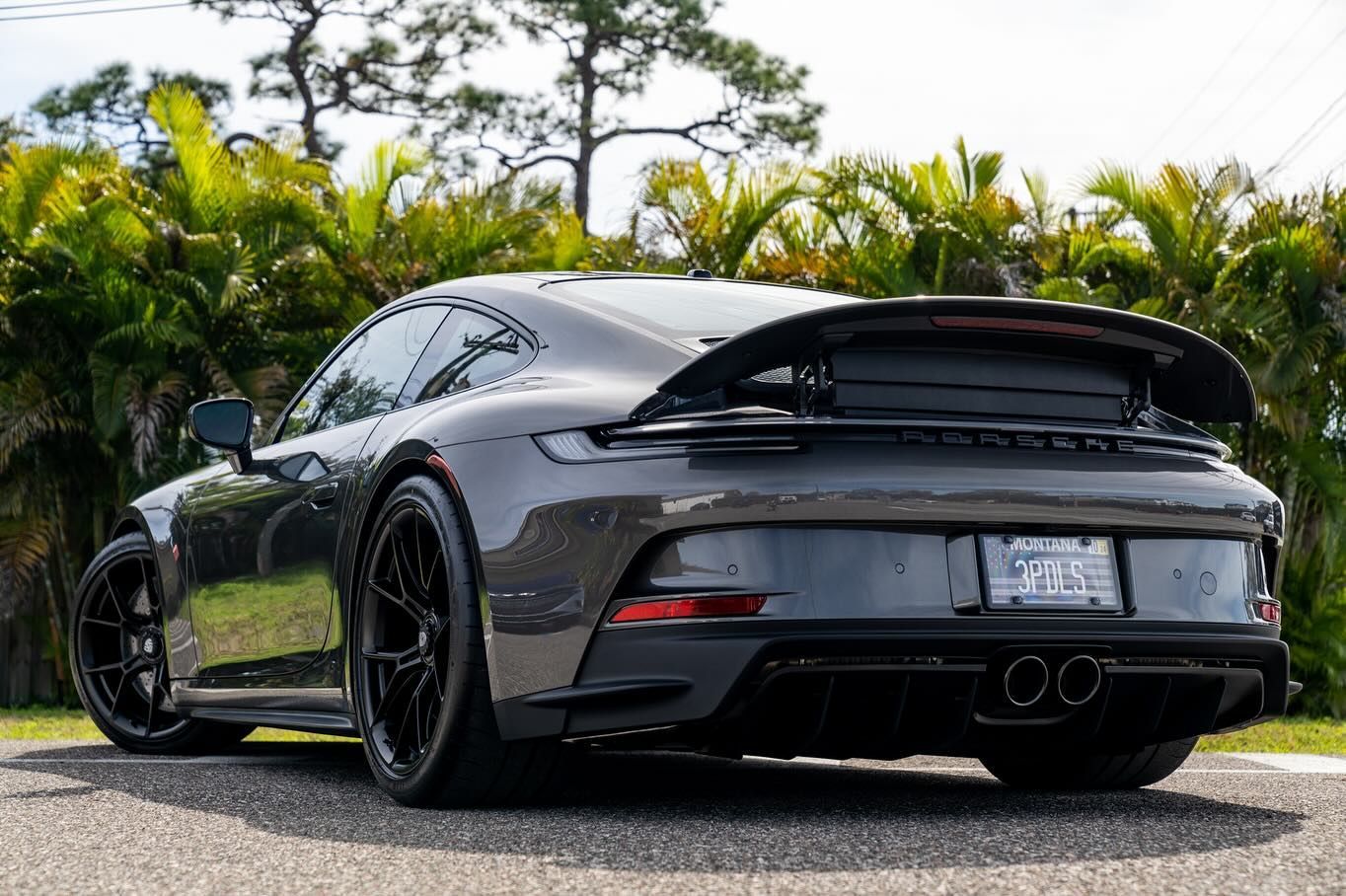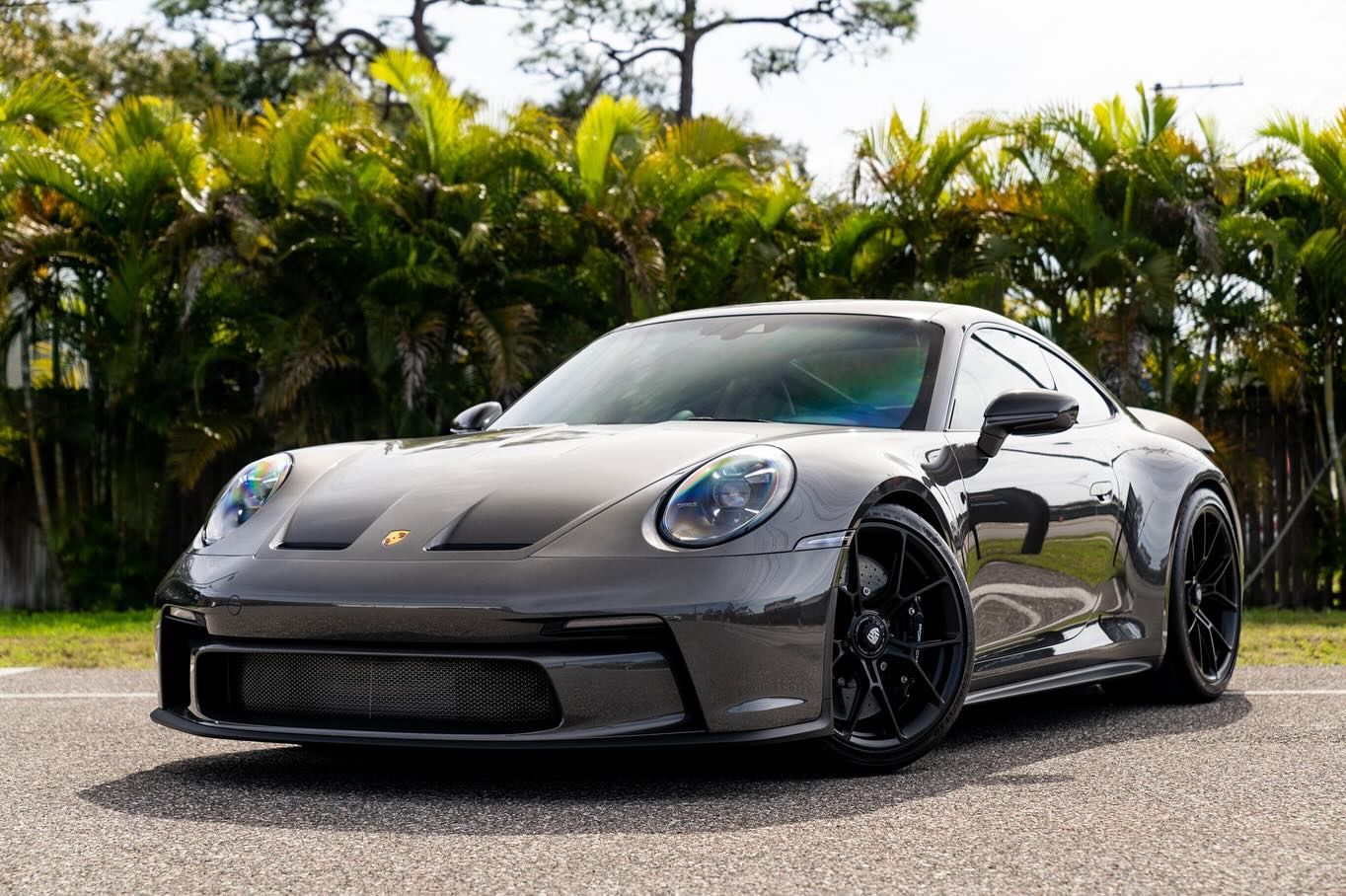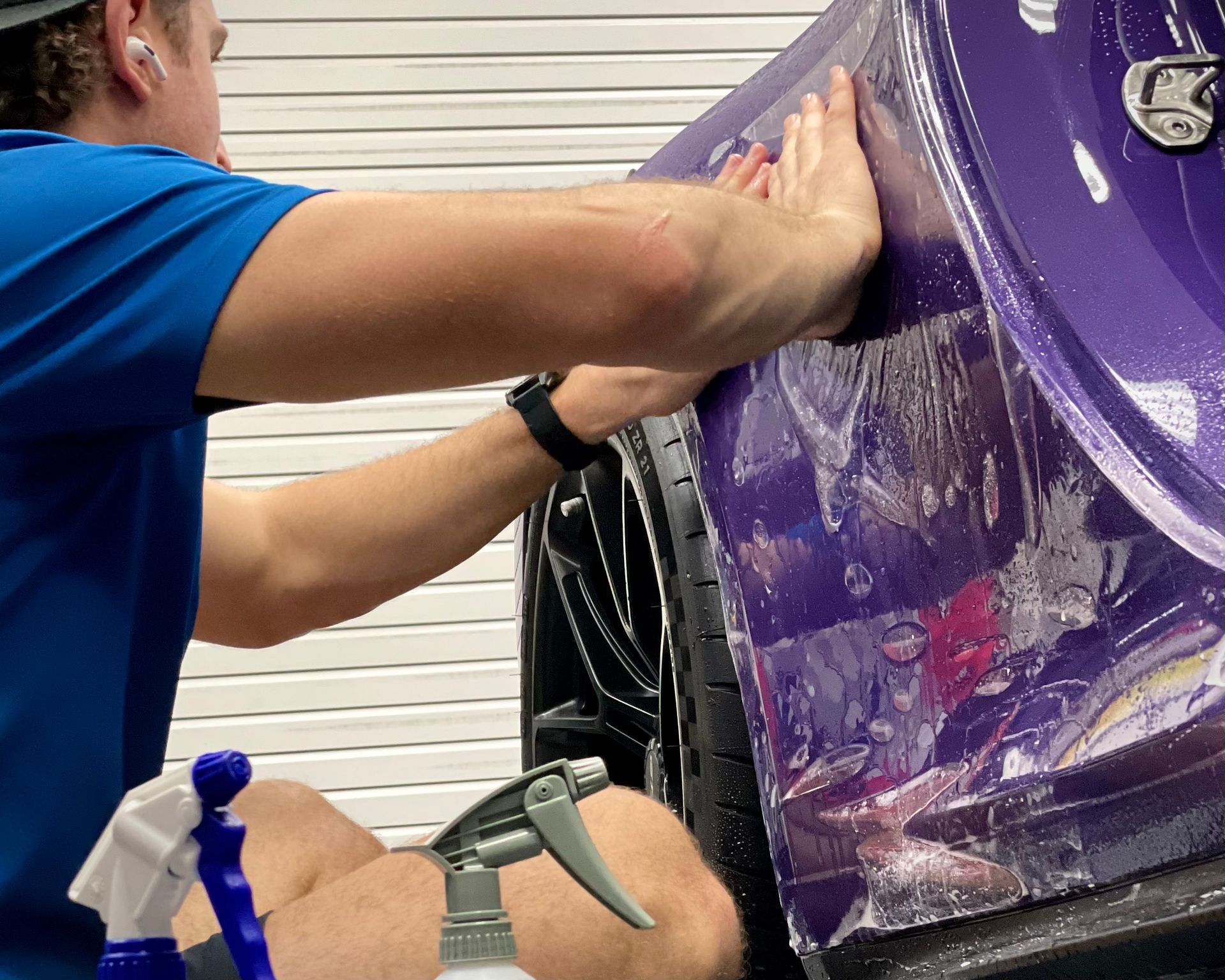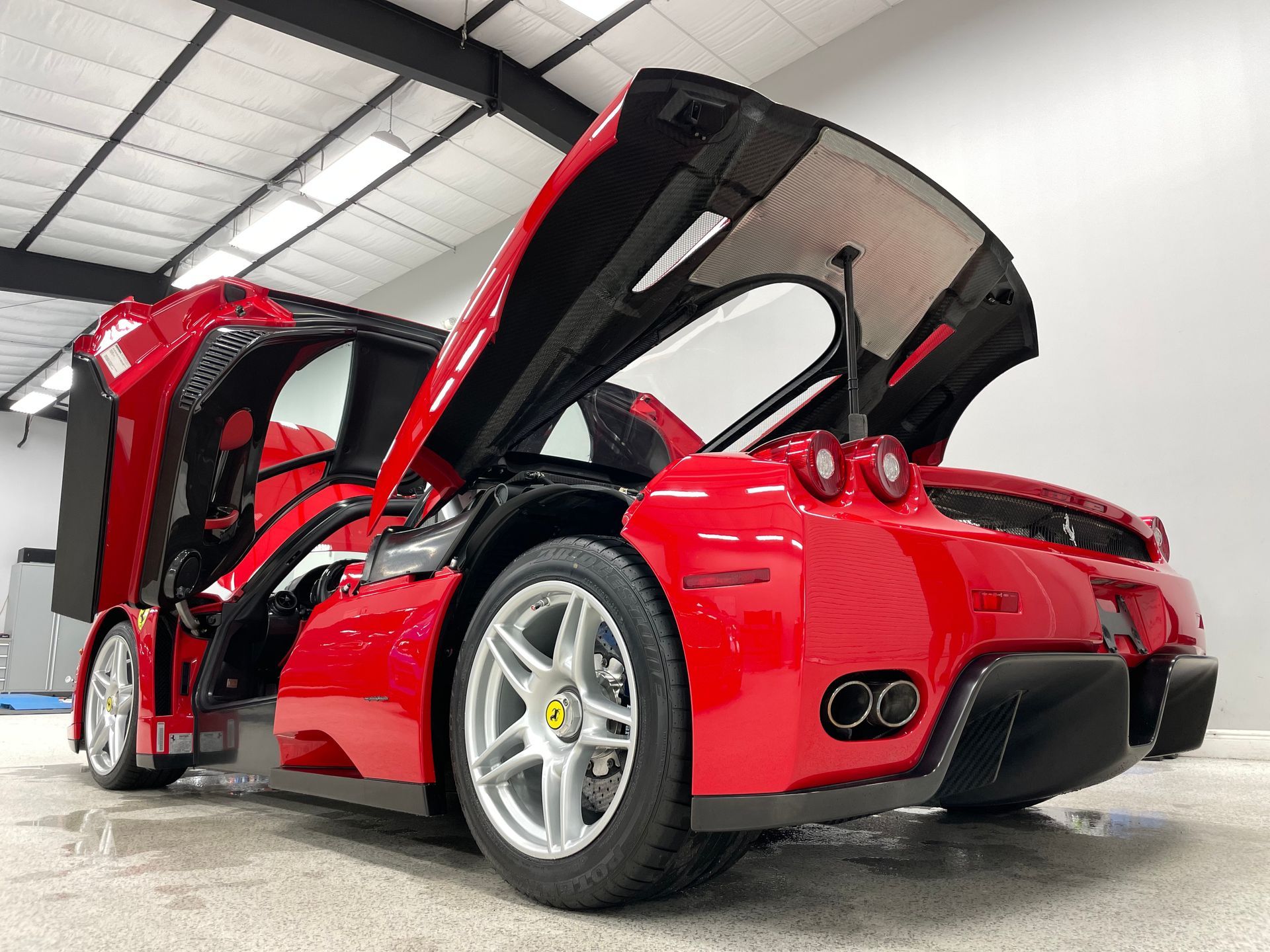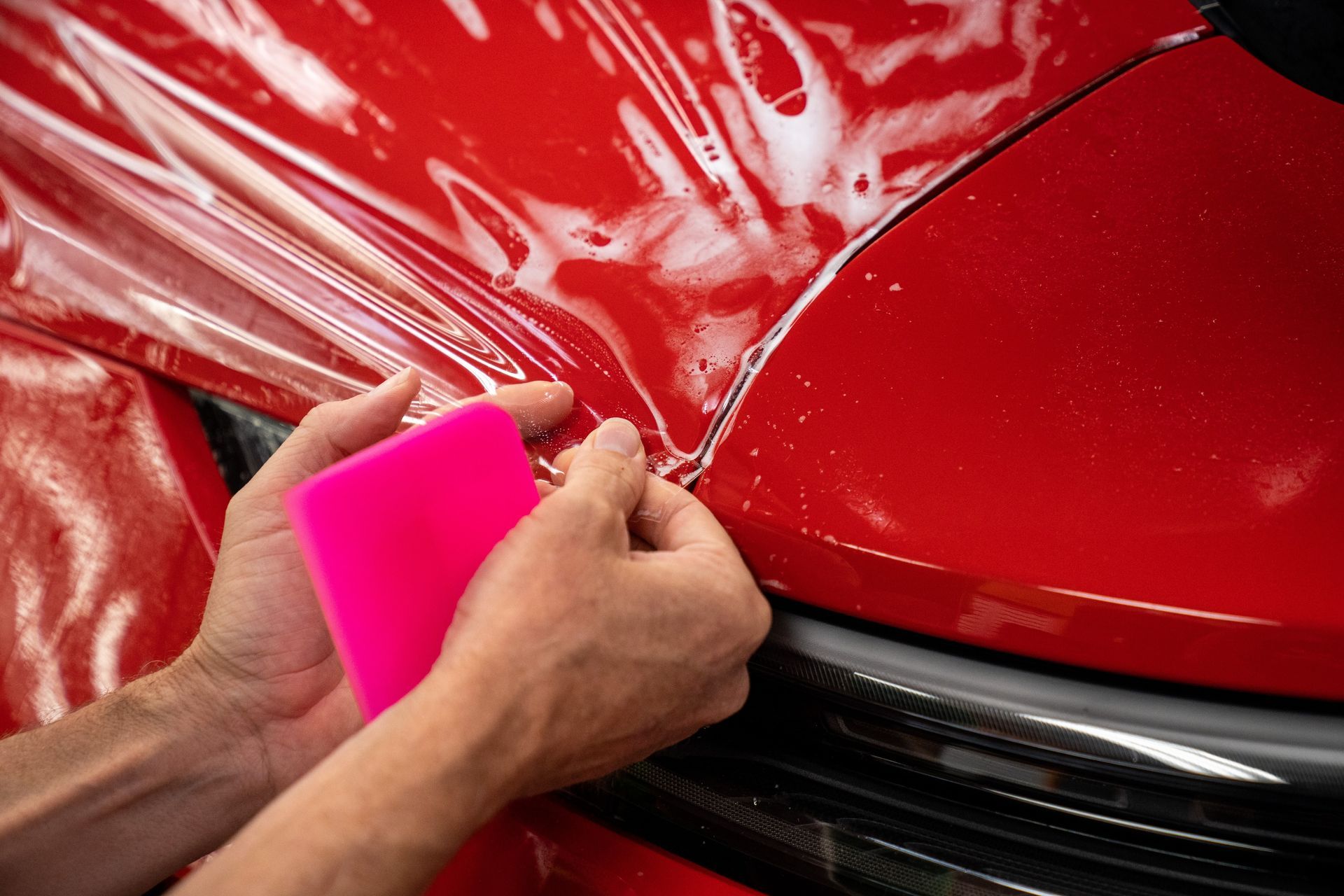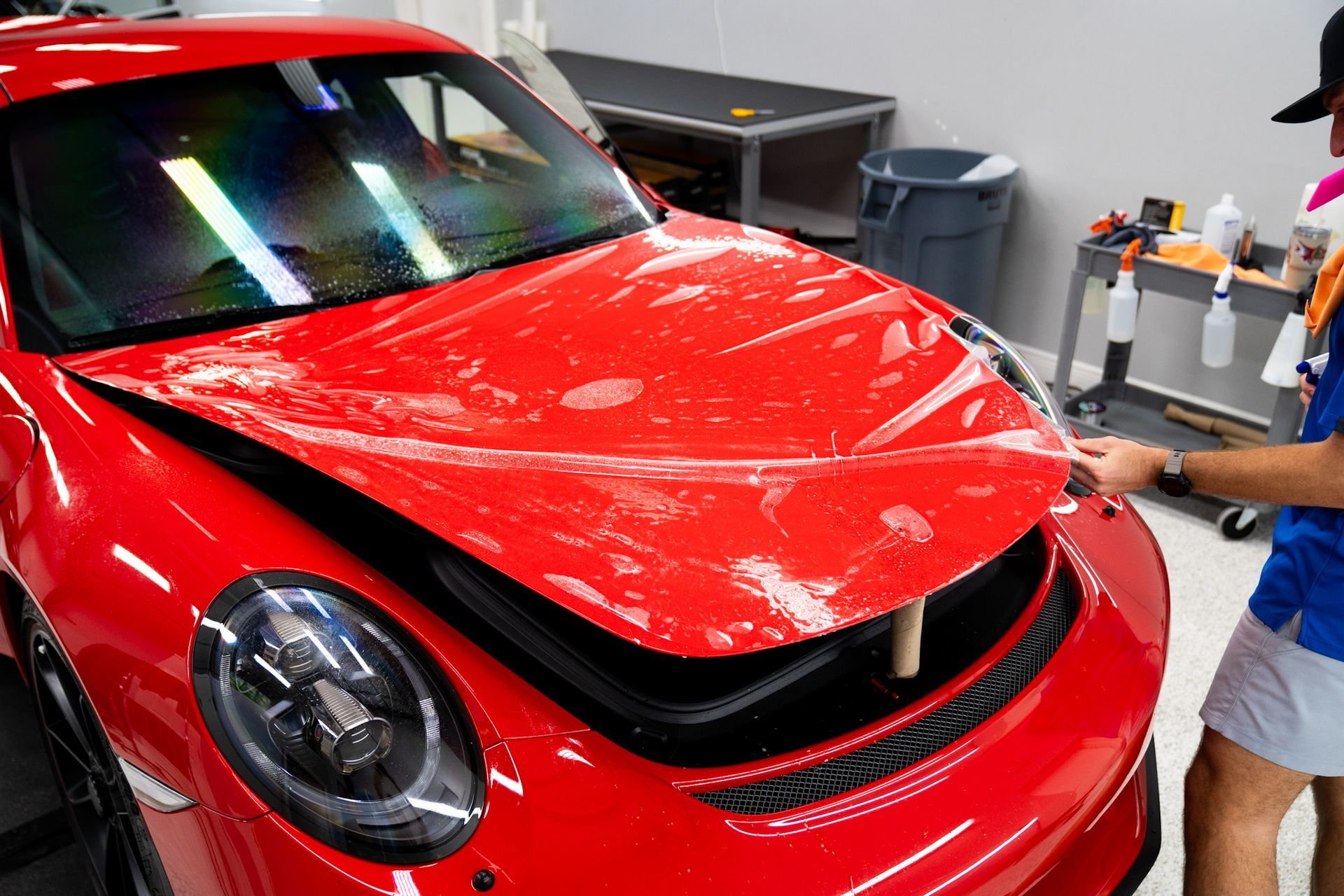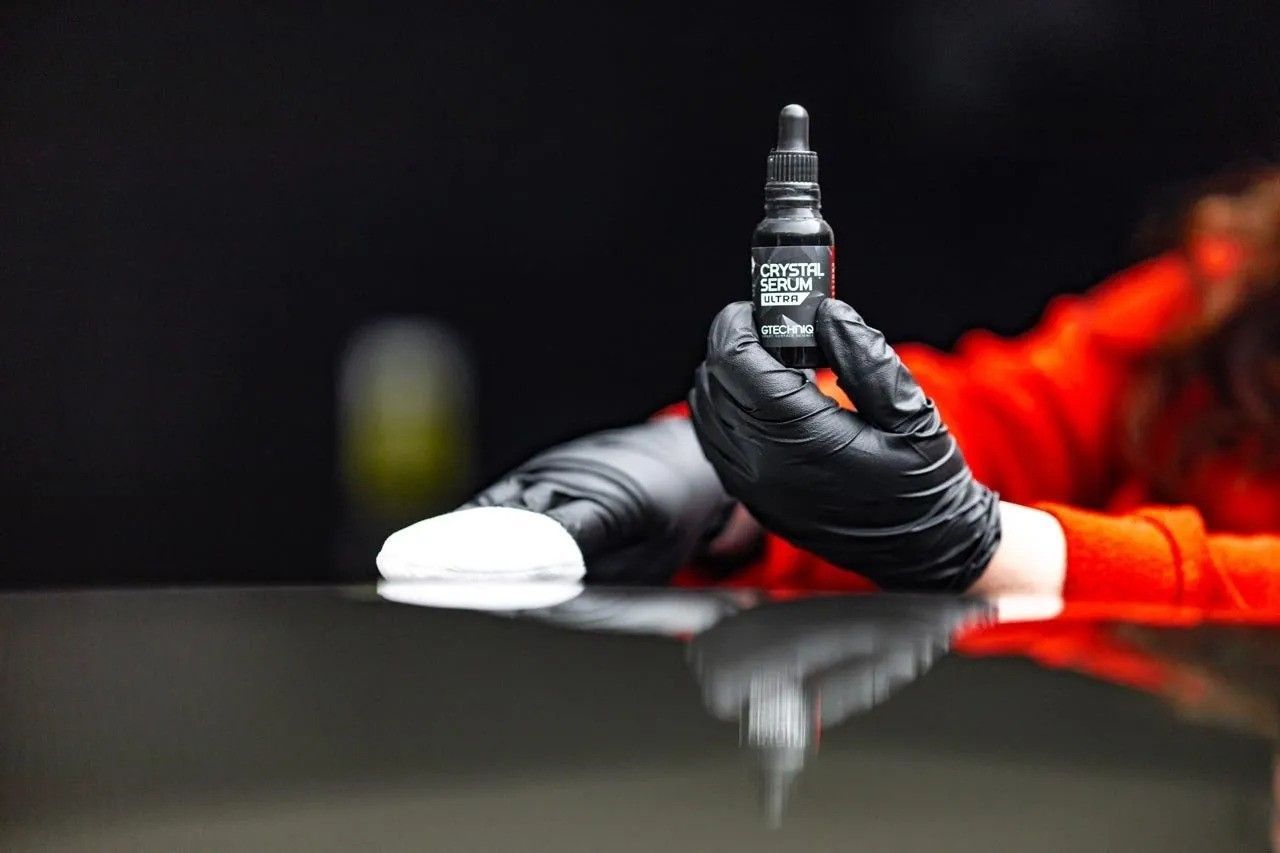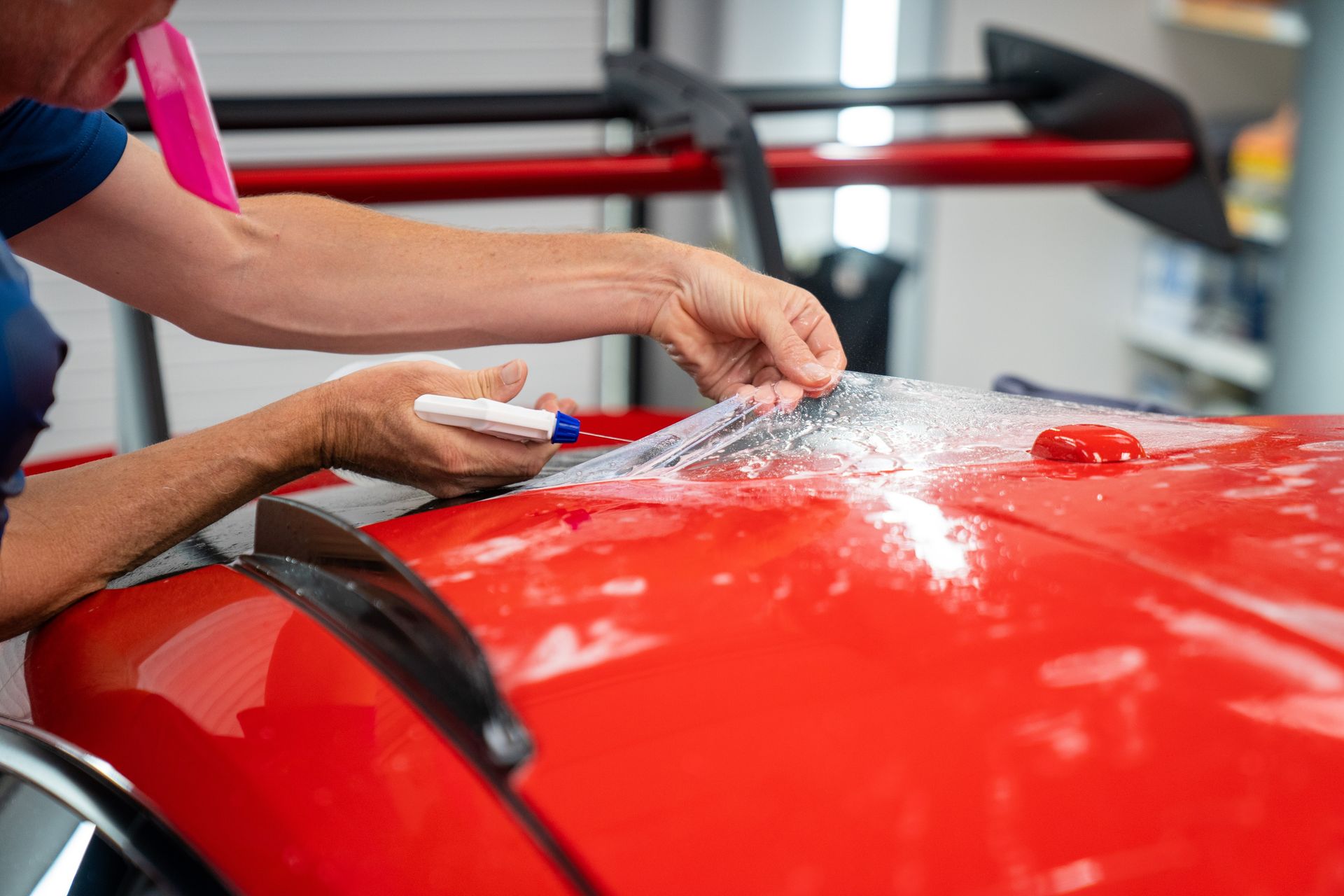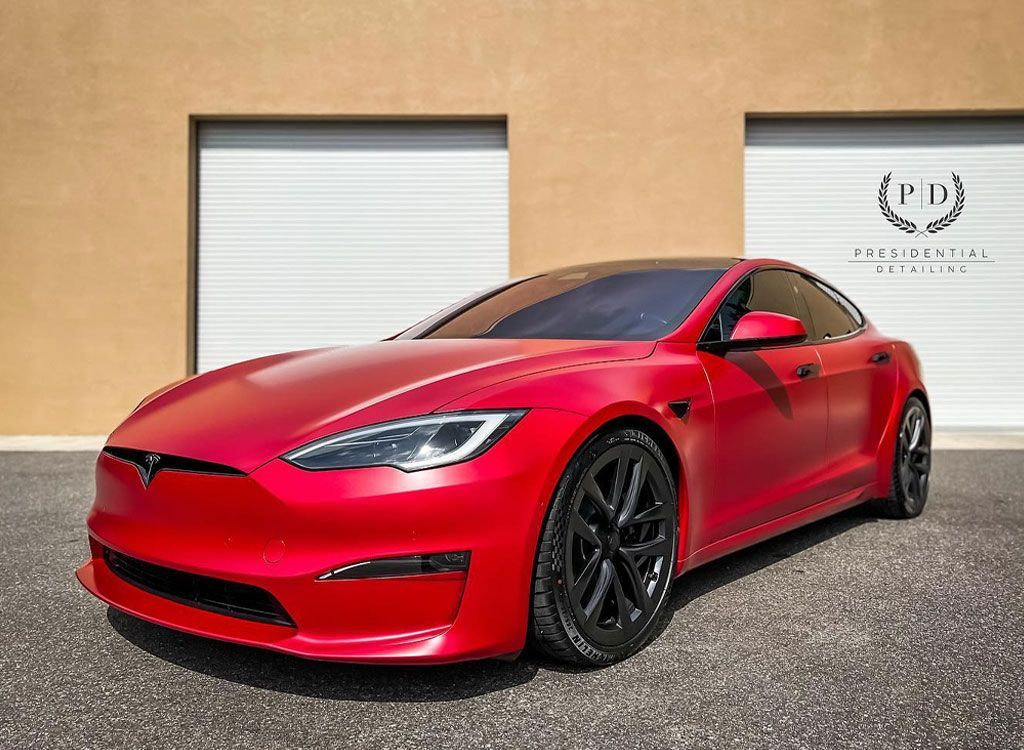Maintenance of PPF: Essential Care Tips for Long-Lasting Protection
CALL (813) 723-9679
GET A FREE ESTIMATEWhen you invest in a Paint Protection Film (PPF) for your vehicle, it’s not just about the initial shine; it’s about preserving that beauty for the long haul. Think of it like putting on sunscreen before a day at the beach—you wouldn’t skip that step if you want to avoid sunburn, right? Just like sunscreen needs reapplication and care to be effective, your PPF requires regular maintenance to continue protecting your paint from scratches, chips, and environmental damage. In this guide, we’ll explore simple yet vital care tips to ensure your PPF stays as resilient as the day it was applied. Let’s dive in!
Maintenance for Paint Protection Film (PPF) involves regular washing with a mild automotive detergent, drying with a microfiber towel, and applying a spray detailer between washes to maintain gloss. Additionally, it's crucial to inspect the film regularly for signs of lifting or peeling to ensure its longevity and effectiveness in protecting your vehicle's paint.
Washing Your PPF-Coated Car
When it comes to keeping that investment gleaming, a little knowledge about the washing process goes a long way. The first step involves rinsing off loose dirt, which may seem basic, but it's essential for protecting the surface of your PPF. Grab your hose and start at the top of the vehicle. A gentle spray aimed downwards will help dislodge dust and debris, ensuring you don’t scratch the film during washing. This preliminary rinsing not only clears away superficial grime but also preps the surface for a more thorough clean. With the surface cleared of loose dirt, we can move into a more effective cleaning technique: the two-bucket method.
Step-by-Step Guide
The two-bucket method is a game changer when it comes to washing vehicles with PPF. Here’s how it works:
- Fill one bucket with soapy water using pH-neutral soap, preferably designed for automotive finishes.
- In the second bucket, fill it with clean water.
This division is critical because it allows you to wash efficiently without transferring dirt back onto the car's surface. After dipping your microfiber wash mitt into the soapy solution, use it to clean one section at a time. Rinse off the mitt in the clean water before re-dipping it into the soap. By following this method, you minimize the risk of scratches and swirl marks that can ruin that pristine finish.
Once you've given all sections a good wash, it’s essential to ensure your car is completely free from soap residue. Thorough rinsing is next on the agenda. Take your hose again and apply a steady stream of water over every inch of your car, gently guiding it from top to bottom. This will help clear away any lingering soap that could otherwise attract dirt and grime between washes. Aim for a gentle spray setting to avoid disturbing any edges of the PPF—making sure that no suds are still clinging on by the time you finish.
Rinsing successfully completes the washing process; now it’s time to dry off your freshly cleaned vehicle. Drying should be approached delicately to avoid water spots or scratches—and that's where microfiber towels shine. Use clean, fluffy towels and pat dry instead of rubbing; this keeps that protective film intact while absorbing any remaining moisture. If necessary, have multiple towels on hand so you can switch them out as they become damp. Proper drying ensures that your vehicle maintains its glossy appearance while extending the life of both the PPF and your paint beneath.
Following these steps diligently not only keeps your vehicle looking sharp but also preserves its value—setting up a foundation for exploring suitable products tailored specifically for maintaining that protection.
Recommended Cleaning Products
Selecting the right cleaning products is crucial for ensuring the longevity of your Paint Protection Film (PPF). Using safe, appropriate products protects the film, prolongs its life, and keeps your car looking pristine. It’s essential to take some time to explore your options rather than just grabbing any product off the shelf. For instance, when choosing a pH-neutral car shampoo, you want something that avoids harsh chemicals like citrus-based cleaners, which can degrade the film over time. Instead, a gentle formula will effectively clean without compromising the integrity of the PPF.
- Essential Product Types: In addition to shampoos, having a great quick detailer spray on hand can be immensely beneficial. Opt for one that is specifically formulated with lubricants; this helps reduce friction during application and prevents scratching. It's also important to consider what you use for applying those products. Using microfiber wash mitts and towels is recommended since they are significantly softer than cotton, which means they’re less likely to scratch the surface of your PPF. Ensuring these materials are clean and free from debris before each use will go a long way in avoiding scratches.
- Additional Considerations: When it comes to wheel care, don’t overlook selecting appropriate wheel cleaners. Always choose non-acidic formulas as they won’t degrade the PPF around your wheels. The unique combination of heat and dirt around this area requires extra attention, but doing so correctly will ensure lasting appearance and protection. For light contaminant removal, consider using clay bar kits. They work well but should be used cautiously; always pair them with a lubricating spray to prevent dulling or scratching the surface.
Products from trusted brands often come highly recommended. However, feel free to double-check compatibility with PPF on product labels. A little research goes a long way—ensuring you use products designed for this purpose will not only help maintain your car's aesthetics but also prolong the life of your PPF investment. As we move forward, understanding how to effectively remove debris can further enhance the protection and beauty of your vehicle’s finish.
Techniques for Debris Removal
Removing unwelcome guests like bugs, bird droppings, and tree sap from your Paint Protection Film (PPF) isn’t just about making your vehicle look good; it’s critical for preserving the film's integrity. If left untreated, these substances can eat away at the protective layer and damage the underlying paint. To tackle these issues, it's vital to employ correct methods that ensure effective cleaning without harming the PPF.
Quick Tip for Immediate Action
The moment you notice any foreign substance on your PPF, take action! A product that makes this task easier is a quick detailer spray. Simply spritz it onto the affected area and use a gentle touch with a microfiber cloth. This initial step helps dissolve softer contaminants without requiring excessive rubbing or scrubbing, which can scratch the film. However, you may not always be able to act immediately. If these substances dry out, they can become particularly stubborn, demanding a more strategic approach.
For Dried Debris
In cases where bugs or bird droppings have dried up, start by soaking a clean microfiber cloth in warm, soapy water. Placing this cloth over the impacted area for several minutes will soften the debris and make it easier to remove without damaging your PPF. Use caution—gentle wiping should be enough to lift the remnants without excessive pressure that could lead to scratches.
When dealing with tree sap, which can be even more tenacious, a clay bar might become your best friend. With an appropriate lubricant—a detailing spray or soapy water—you can gently rub the clay bar against the sap. The clay bar will pick up the sticky residue while ensuring that no harm comes to the PPF itself. Always remember to follow up with a rinse of clean water to remove any leftover soap and contaminants after you've finished.
Using these straightforward techniques will help you manage stubborn contaminants effectively while maintaining both the aesthetic appeal and protective qualities of your PPF. Attention to detail now ensures the longevity of your vehicle's protection as we turn our focus to methods that preserve surfaces against wear and tear.
Surface Preservation Methods
One of the most effective ways to keep your PPF looking pristine is to routinely apply a sealant designed specifically for use with PPF. This extra layer creates a protective barrier that can withstand environmental stressors better than unprotected film alone. By applying a quality sealant every six months, you’re enhancing the appearance of your vehicle and prolonging the life of the film itself. It’s like giving your car an armor upgrade!
According to several experienced PPF installers, this simple step can significantly enhance durability—yet it's crucial to choose a product explicitly labeled as safe for PPF use to prevent any damage to the film's adhesive properties. While sealants provide added protection, regular inspections form the backbone of effective PPF maintenance.
- Conduct Regular Inspections: Just like keeping an eye on your own health, staying attuned to the condition of your car's surface is essential. Make it a habit to inspect the edges and seams of your PPF every few months. Look out for signs of lifting or peeling; even minor detachment can lead to major problems down the road if not addressed promptly. Think of it as looking for small leaks in a boat before setting sail—the sooner you catch them, the less likely they are to sink your ship. Early detection allows for swift repairs, saving you from needing extensive replacements or costly professional help later on. Lastly, let’s talk about how your habits influence the overall longevity of your PPF.
- Parking Considerations: Where you park can dramatically affect the health of your PPF. Whenever possible, seek shade or cover when leaving your vehicle parked outdoors. Sunlight can be particularly damaging, causing UV rays to deteriorate both paint and protective films over time. Additionally, bird droppings or tree sap can wreak havoc on even the sturdiest surfaces; placing a car cover over your vehicle when it’s parked outside will further shield it from these harmful elements. Think about it this way: just as we wear sunscreen to protect our skin from harmful UV radiation, our vehicles deserve similar protection against nature's elements.
Understanding how to properly care for your protective measures sets the stage for exploring ways to combat other environmental challenges that threaten your vehicle’s finish.
Shielding Against Contaminants
Contaminants such as road tar, bug splatter, and tree sap can pose significant threats to the integrity of your PPF. These substances often cling stubbornly to surfaces, making them difficult to remove without proper care. The good news is that with the right strategies, you can effectively manage these nuisances and keep your vehicle looking pristine.
Protective Products
One of your best defenses against harmful contaminants is investing in a quality PPF sealant. These sealants create a hydrophobic layer that repels water and makes it more challenging for contaminants to adhere to the film’s surface. Think of it as your car's personal bodyguard — always on duty, keeping unwanted intruders at bay. When selecting a sealant, look for products enriched with UV protectants, which will help maintain the film’s clarity and shield against damaging sun exposure that can lead to discoloration over time. In addition to using protective products, installing the PPF strategically on your vehicle can greatly enhance your defenses against wear and tear.
Protective Film Installation
For cars frequently exposed to demanding environments—think city driving or long highway trips—it's wise to apply PPF specifically on high-impact areas like the front bumper, hood, and mirrors. This targeted installation minimizes potential damage from road debris while ensuring that your most vulnerable areas receive that extra layer of protection.
In fact, statistics indicate that a properly applied PPF can reduce paint damage from road debris by up to 70%. That’s not just impressive; it’s a considerable investment for long-term benefits. To underline the effectiveness of this approach, consider how many small dings and scratches you could avoid by proactively protecting these critical areas. Each chip avoided prolongs both the life of the paint beneath and enhances the resale value should you decide to sell in the future.
Remember, maintaining clean surfaces not only keeps your vehicle looking brand new but also ensures that your protective measures are working efficiently. By implementing strategic installation practices alongside high-quality protective products, you’re well on your way to preserving both the aesthetic and monetary value of your vehicle for years to come. As we explore further into this subject, recognizing common pitfalls in maintenance will help sharpen your skills in caring for your investment.
Common Mistakes to Avoid
When it comes to maintaining your Paint Protection Film (PPF), awareness of common mistakes can significantly affect its longevity and performance. One major error many car owners make is using harsh chemicals for cleaning; cleaners containing alcohol, ammonia, or acidic ingredients can severely damage the film’s surface. Imagine diligently applying a product only to have it erode the very protection you intend to maintain.
An equally critical mistake involves ignoring minor damage. Small tears or lifting edges may seem inconsequential at first, but they can lead to more significant issues if not addressed promptly. Once moisture seeps underneath the film, you not only compromise its effectiveness but can also create a breeding ground for mold or discoloration. Nobody wants to see their protective layer fail due to something that could have been fixed with just a little attention.
Another common pitfall is over-polishing the surface. While maintaining that shine is essential, using abrasive polishes can scratch and damage the PPF's clear coat. It’s much like buffing your favorite coffee table—too much effort in the wrong way could dull its finish rather than enhance it. Instead, opt for gentle detailing products specifically designed for PPF, ensuring the finish remains pristine without causing unnecessary wear.
Finally, relying on high-pressure washers can lead to serious issues as well. Many people assume that stronger is better when it comes to cleaning, but using these powerful jets too close to the edges of the film might lift it away from your car’s surface. Imagine aiming that hose at a stubborn dirt spot only to find your protective barrier peeling back—definitely not the results you hoped for!
To keep your vehicle looking its best and your PPF performing optimally, remember: treat it gently and address any signs of wear swiftly. Regular inspections can help catch problems early, ensuring that your investment remains secure over time. By avoiding these common pitfalls and respecting the boundaries of your PPF care routine, you’ll be doing yourself—and your vehicle—a big favor! In conclusion, safeguarding your Paint Protection Film is all about consistency and care. Take time to ensure its maintenance so you can enjoy lasting protection for your vehicle's surface.
Clearwater’s Leading PPF Services
Presidential Automotive Detailing in Clearwater, FL, offers premium Paint Protection Film (PPF) services designed to safeguard your vehicle against road debris, scratches, and harsh weather conditions. Our expert team uses only the highest quality PPF to ensure your car’s exterior remains flawless, preserving its appearance and value for years to come. With our meticulous attention to detail and professional installation, you can drive with confidence knowing your vehicle is shielded from everyday wear and tear. Experience the ultimate in paint protection today!

